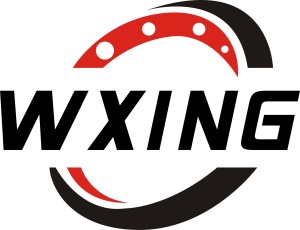PRODUCT
The role of TIMKEN bearing parts heat treatment
by:Waxing
2020-09-28
To exactly determine the degree of overheating must observe the microstructure.
If appear in GCr15 steel quenching organization coarse acicular martensite, organization for quenching overheating.
Reasons may be the high quenching heating temperature or heat insulation time is too long cause comprehensive overheating;
Also may be due to the original organization banded carbide, between two belts.
Quenching crack bearing parts in the process of hardening cooling by internal stress of crack according to quenching crack.
Of the cause of the crack are: due to quenching heating temperature is too high or cooling, the thermal stress and quality of metal volume change of the organization stress is greater than the fracture strength of steel;
The original defects on the surface of the work (
Such as surface microcrack or scratches)
Or steel internal defects (
The non-metallic inclusions such as slag, serious, white spots, shrinkage residual, etc. )
When quenching form stress concentration;
TIMKEN bearing serious surface decarbonization and carbide segregation;
Parts hardening after tempering lack or not timely temper;
The previous process caused by salt stress, cold forging folding, deep turning tool and the oil groove sharp edges, etc.
In conclusion, the causes of quenching crack could be one or more of the above factors, the existence of internal stress is the main reason for the formation of quenching cracks.
Quenching crack deep and long, fracture surface is flat, the broken section without oxidation color.
It is often a longitudinal straight on bearing ring crack or annular crack;
Shape on the bearing steel ball are s-shaped, bearing parts in the process of heat treatment, if they are in oxidizing medium heat, TIMKEN bearing surface oxidation happens makes parts surface carbon mass fraction decreases, causing surface decarburization.
The depth of the surface decarburization layer over the last machining allowance can make the parts scrap.
The determination of surface decarburization layer depth is available in the metallographic examination metallography and microhardness method.
The surface microhardness distribution curve measurement shall prevail, to do the arbitration criterion.
TIMKEN bearing parts after heat treatment of the common quality defects are: quenching microstructure overheating, less heat, quenching crack, hardness is not enough, the heat treatment deformation, surface decarburization, soft point etc, TIMKEN bearing maintenance and repair methods.
Overheating from the mouth of the bearing parts rough can observe the microstructure after quenching overheat.
The importance of TIMKEN bearings, means that when the damage cause of equipment downtime, so this type of bearings shall be equipped with best temperature probe.
Under normal circumstances, TIMKEN bearings in just after the grease or lubricant will be a natural temperature rise and the last one to two days.
Usually, working temperature over 150 ° using high temperature bearing called TIMKEN bearing, due to chromium bearing steel in the use of temperature over 150 °, the hardness will fell sharply, size is not stable, TIMKEN bearing cannot work normally.
So for the working temperature at 150 ° to 350 ° work under the conditions of TIMKEN bearings, if the ring and rolling body still choose ordinary high carbon chromium bearing steel manufacturing, it must be special tempering treatment was carried out on the bearing parts, shall generally be higher than working temperature tempering under 50 °.
After tempering treatment according to the requirements of the TIMKEN bearing steel, can be used in normal working temperature.
But after tempering hardness decreased, TIMKEN bearing life.
When the bearing temperature higher than 350 °, must use high temperature resistant TIMKEN bearing steel manufacturing.
TIMKEN bearing temperature is too high: 1, the bearing lubricating oil quality, high viscosity lubricating oil;
2, assemble is too tight, the gap is insufficient;
3, TIMKEN bearing assembly too tight;
4, TIMKEN bearing race in internal rotation shaft or housing;
5, bearing heavy load;
6, TIMKEN bearing cage or rolling body fracture.
Custom message



























































































